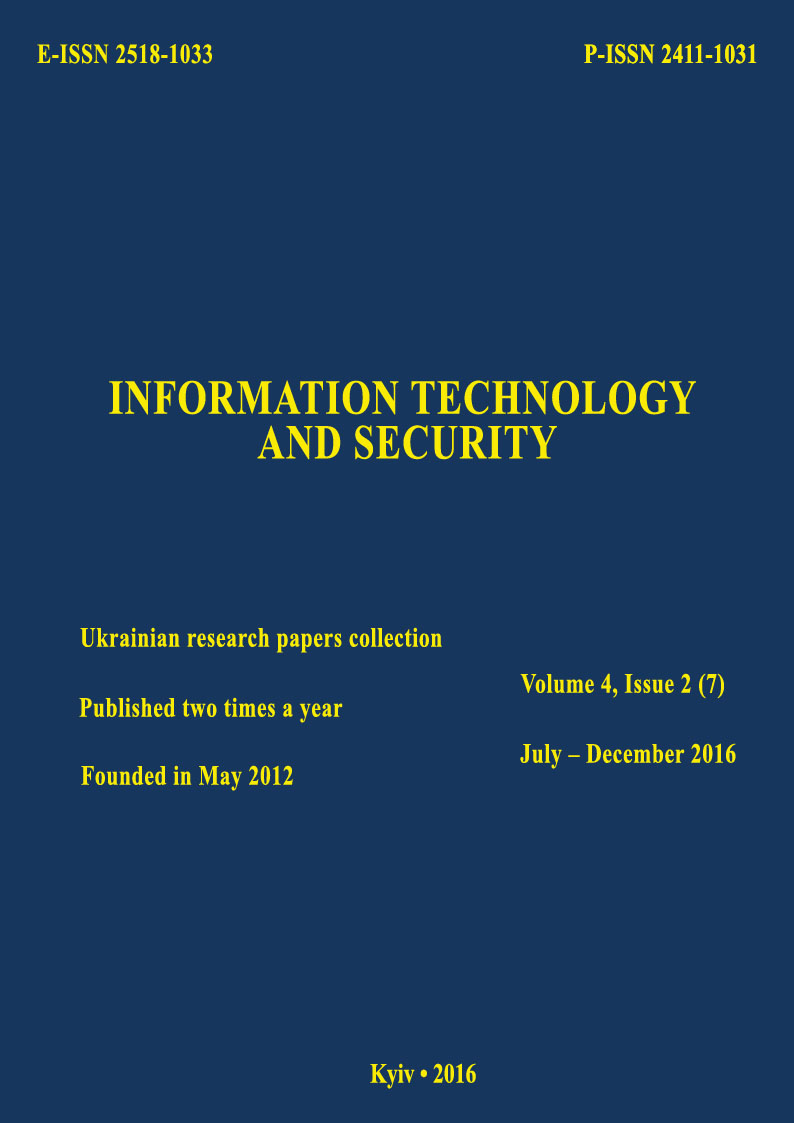Building protection systems on the basis of information multilevel hierarchical model
DOI:
https://doi.org/10.20535/2411-1031.2016.4.2.109917Keywords:
Protection reporting purposes, information technology, security model, the integrity of system protection.Abstract
At the modern stage of the development in the field of information technology it is still impossible to provide the software information security over the whole information system for lack of practical decisions in the market, which should work for organizing integrated information security systems in particular. So nowadays, in our opinion, the ultimate solution is to organize exactly these complex information security systems, developed on basis of hierarchical multilevel model. Obviously, it is generally possible to organize the integrated information security system, but only with limitless resources of the project. Therefore, a reasonable and, what is the most important, sufficient compromise between functional group of the system and aggregate value of its construction and exploitation is required to be found in practice. According to the suggested model, the security problem may be solved through delimitation of requirements and functionality for each of information security system levels naturally with reference to every group of the information resources and security tools. It is possible to put it into practice, because within the limits of one level requirements to information security are determined. One of the main advantages of presenting information security system as a hierarchy of functionally independent levels is significant simplification of system design, because the designing of one multifunctional and complex system may be divided into several finished stages of designing far less complicated systems for every level taken separately and for the finishing operation in order to control the security system integrity by stepping from one level to another. The suggested system approach enables to reduce time for information security system development and to offer a customer a really ultimate and reasonable decision at the same time.
References
V.I. Andreev, Yu.Yu. Goncharenko, M.M. Divizinyuk, I.N. Pavlov, and V.A. Horoshko. Technical security information system design. Sevastopol, Ukraine: “SNUIAEiP” Publ, pp. 147-151, 2011.
S.V. Tolyupa, and І.І. Parhomenko, “Organisation of integrated security information systems based on the structural approach”, Modern ways of information securing, no. 4, pp. 96-104, 2015.
I.N. Pavlov, “Security information system design. Formal approach”, Legal, standard and metrological secure software in Ukraine, no. 11, pp. 54-59, 2005.
S.V. Tolyupa, “Projecting of decision-making support systems in process of restoring and integrated securing of information systems”, Modern ways of information securing, no. 4, pp. 69-74, 2015.
S.V. Tolyupa, V.S. Nakonechnyy, Yu.M. Yakimenko, “Information security evaluation in computer-controlled systems due to the general criteria”, Scientific investigations of the Signals Research Study institute in Ukraine, no. 6 (40), pp. 27-31, 2015.
S.V. Tolyupa, V.S. Nakonechnyy, Yu.M. Yakimenko, “Information securing in computer-controlled information systems”, Scientific investigations of the Signals Research Study institute in Ukraine, no. 5 (39), pp. 33-37, 2015.
Downloads
Published
How to Cite
Issue
Section
License
Copyright (c) 2020 Collection "Information technology and security"

This work is licensed under a Creative Commons Attribution 4.0 International License.
The authors that are published in this collection, agree to the following terms:
- The authors reserve the right to authorship of their work and pass the collection right of first publication this work is licensed under the Creative Commons Attribution License, which allows others to freely distribute the published work with the obligatory reference to the authors of the original work and the first publication of the work in this collection.
- The authors have the right to conclude an agreement on exclusive distribution of the work in the form in which it was published this anthology (for example, to place the work in a digital repository institution or to publish in the structure of the monograph), provided that references to the first publication of the work in this collection.
- Policy of the journal allows and encourages the placement of authors on the Internet (for example, in storage facilities or on personal web sites) the manuscript of the work, prior to the submission of the manuscript to the editor, and during its editorial processing, as it contributes to productive scientific discussion and positive effect on the efficiency and dynamics of citations of published work (see The Effect of Open Access).

